How I unblocked a stalled Salesforce CRM integration
Case Study | Leo Vroegindewey | 2019-2020
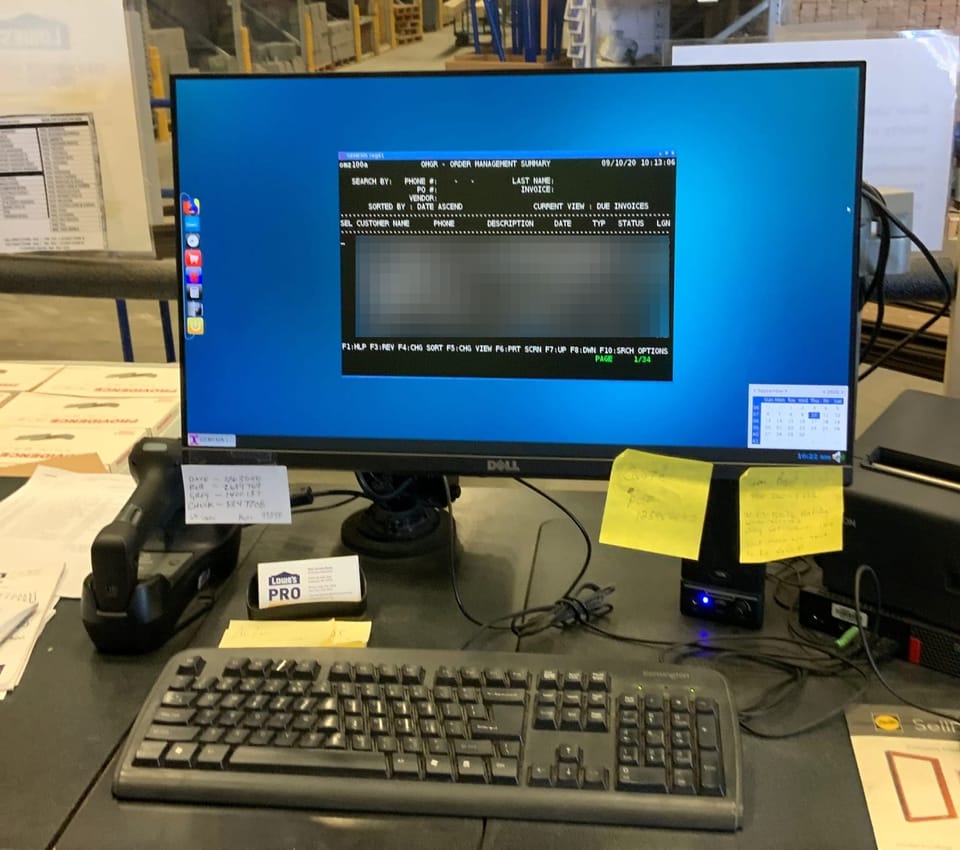
Highlights
- Lowe's sales team LOB with US$3 Billion in sales, wanted to unlock sales insights and drive a unified sales strategy across the U.S., leveraging sales data from the Salesforce CRM product.
- Sales representatives were able to:
- Increase productivity by eliminating manual processes.
- Unlock customer sales insights that were previously unavailable.
- Eliminate the use of antiquated software tools.
- Identify Lowes customers more readily
- The business team was able to:
- Automate sales processes across the B2B sales organization
- Eliminate manual business processes related to managing sales data

Introduction
The Pro Sales business team had selected Salesforce CRM to be installed at every Pro desk at Lowe's 1,700 stores across the U.S. The business team's goal was to unlock new sales insights and create more clarity on which sales strategy to pursue.
The business team also wanted to eliminate antiquated business tools that the Pro Sales Specialists (PSS) were using in a bid to modernize the sales tech stack of the Lowe's Pro sales teams.
Contrary to popular belief, Salesforce integration projects are not always simple and straight forward implementations and this project proved this true. A good Salesforce implementation project requires a target state that spells out exactly what the organization hopes to accomplish by using Salesforce.
Intake and discovery
We met with the Pro Sales business team to discuss the Salesforce CRM roll-out, review business requirements, and which key behaviors they wanted to influence at the Pro desks across the Lowe's stores.
Insights:
- After the kick off and conducting an intake, we learned there were several gaps and many assumptions about how the Pro Sales Specialist (PSS) would work using the Salesforce CRM product.
- Acceptance criteria and user stories would prove to be challenging to implement from a user perspective because the target state of the implementation had not been fleshed out.
- The business team had already created mockups and came to the project with their minds made up and operated from unproven assumptions.
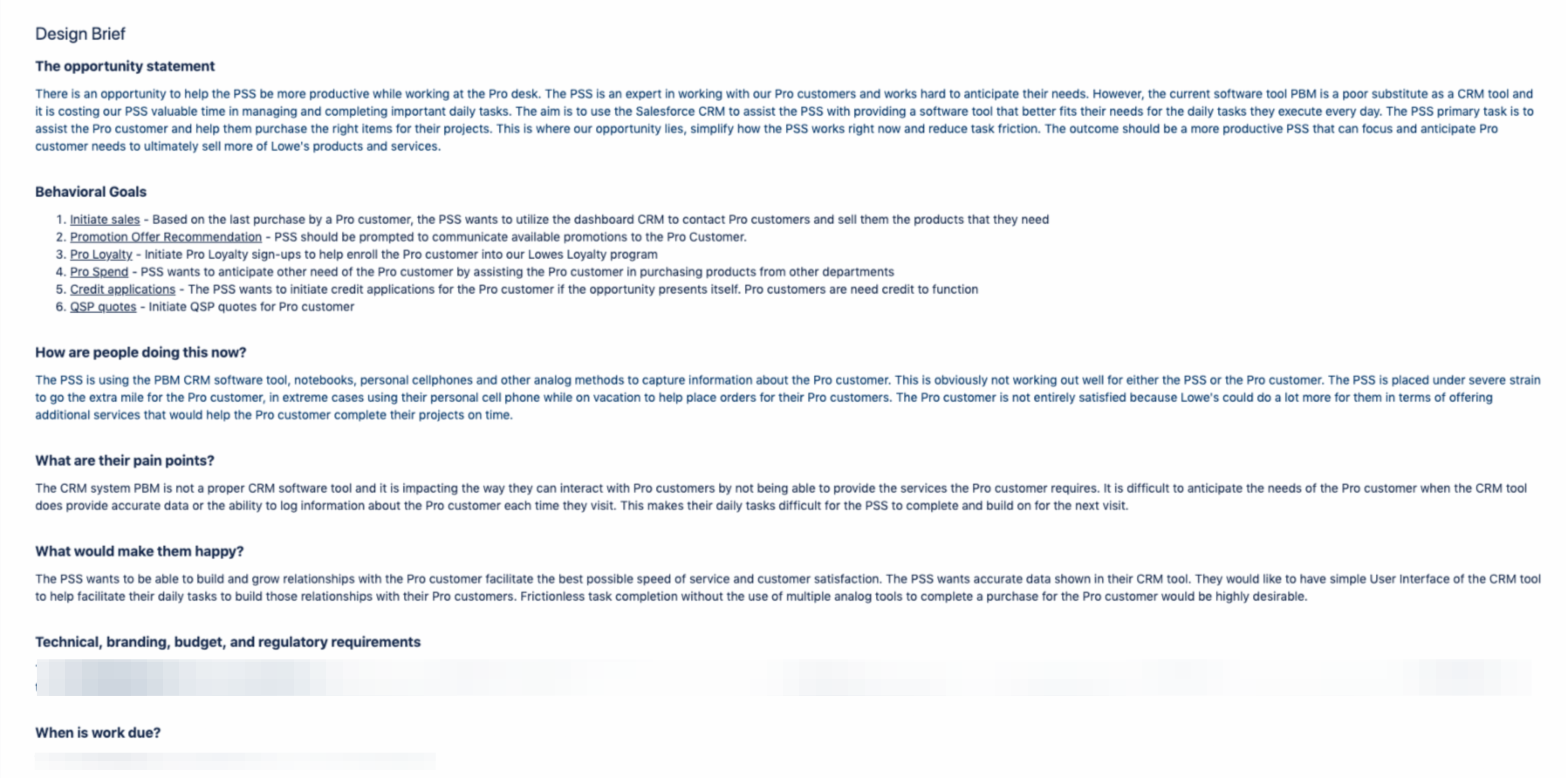
User Research
I did not have the opportunity to conduct research prior to the Salesforce integration kickoff. Throughout the project I spent a lot of time observing customers in the Lowe’s stores and talking with contractors about how they manage their commercial and residential projects. I observed and interviewed Lowes sales reps who sold materials to contractors in numerous stores.
Throughout the Salesforce CRM integration project I would use research to help drive clarity when conducting user story mapping and writing use cases.
User observations
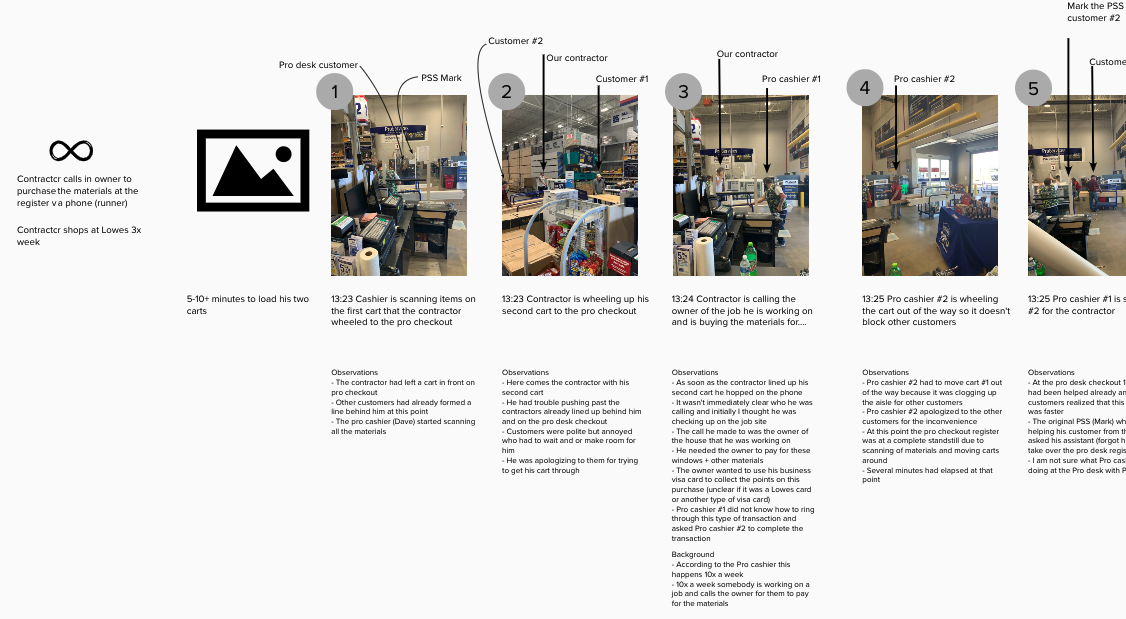
Research synthesis

Pro customer journey map
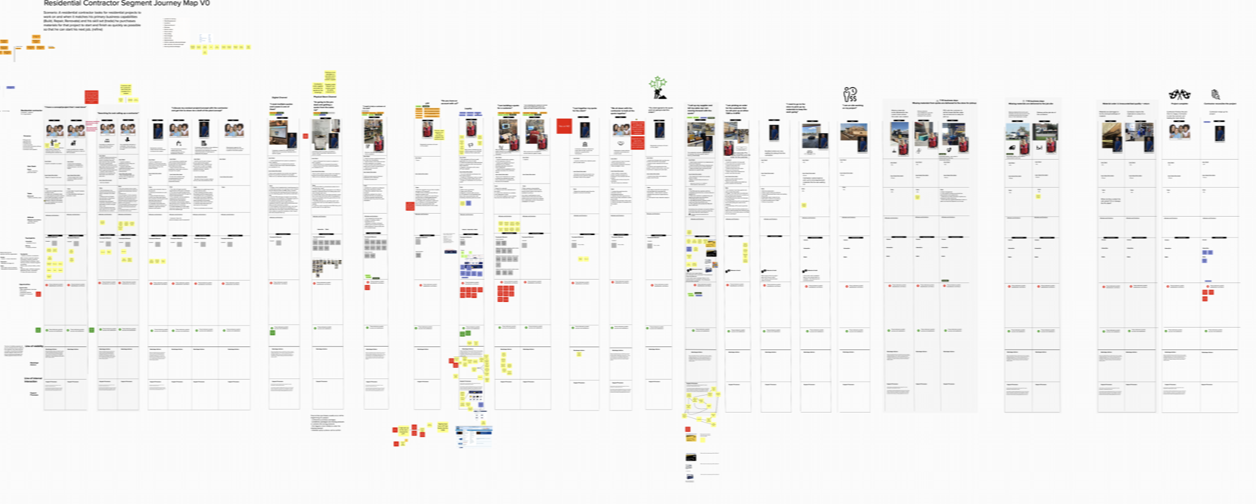
Insights:
- Most research by Lowes is conducted on the East Coast in specific stores, and talking with sales reps who were working in Lowe's stores in other states removed from headquarters was very insightful.
- I built a journey map that captured the customers' and the sales reps' journeys. This is something that most teams split into two different artifacts. As a result, we lost the ability to go after big opportunities to improve the entire journey for everyone involved.
- By creating a journey map, I could pinpoint future intakes and opportunities to customer stages and narrow in on the value proposition that such an opportunity offered. This led to fewer conversations about assumptions and more about solving known user needs.
Writing user stories
Initially, the product managers wrote the user stories and the acceptance criteria for the integration project. However, after several setbacks, I pushed the product design team to take over the writing of their own user stories. I introduced user story mapping to unblock the product team when it stalled out. Later on, I transitioned the team to writing use cases to improve the quality of the requirements.
Insights:
- At first, the design team did not have a top-down view of the Salesforce CRM product strategy; over time, the design team took the initiative to get heavily involved in the planning and directing of what capabilities to build next.
- It strengthened our relationship with the product management team and changed the relationship dynamics, allowing us to work as peers in a cross-functional team.
Example of a user story
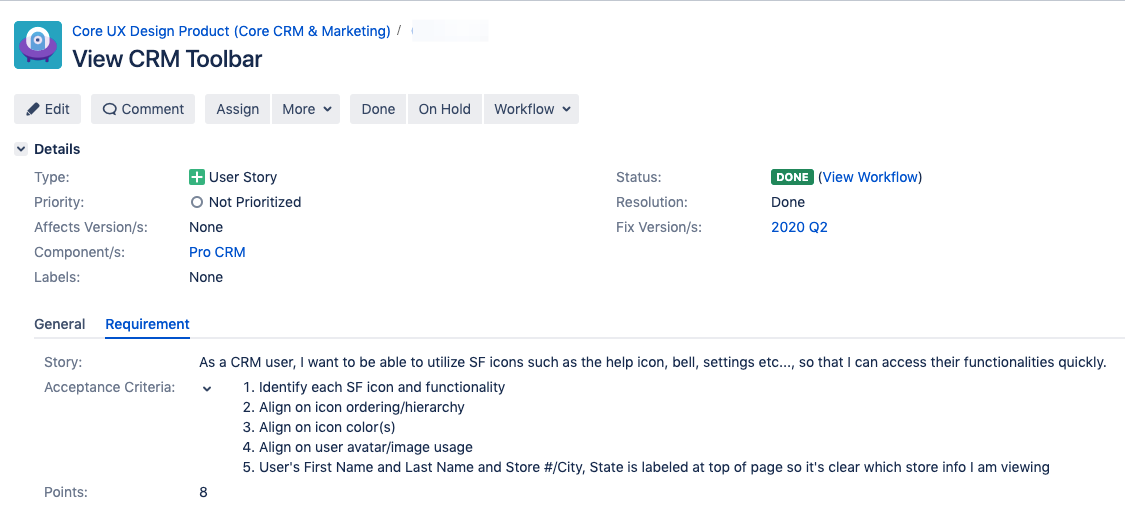
User story mapping workshop
Several times throughout the Salesforce integration project I would turn to user story mapping workshops to work through ambiguous product requirements. Our workshops provide us with scenarios that bring the most value to users and for which I can write use cases.
The product team was new to user story mapping and I taught the team this workshop and eventually some of the designers took over for me and led their own workshops with me just dropping in to observe.
Insights:
- Prior to introducing this workshop, the design team had, at times, very little understanding of the functional requirements that PMs wanted us to design for. To be fair the PMs were provided with ambiguous requirements.
- The workshops took ambiguous requirements that we had sharpened and ended up grounding them in reality.
- We took poorly formatted requirements, allowed the broader product team to understand the problem we were solving, and allowed us to ideate on very specific scenarios we could implement via a use case.
- Using case ideation allowed us to translate customer paint points into opportunities quickly. These opportunities then became scenarios upon which use case flows were built.
User story mapping output

Writing use cases
After a while I realized that working on a Salesforce project is mostly about identifying the system requirement that we wanted to implement. I shifted the team from writing user stories to use cases and scenarios. This was a much better way to think about building a Salesforce CRM and it drastically improved how we created requirements.
Salesforce software is mainly a system-system implementation and the user is mostly viewing, not doing something. I co-wrote more than ten large use cases to cover a lot of target state requirements and unblocked the integration by providing clarity to the product team on what we were actually supposed to be implementing.
Example of a use case
Writing use cases is a lost art. The tech industry replaced business analysts with product managers and we seemed to have lost the ability to think in use cases and completely pivoted to the startup world of user stories and incremental delivery.
Below is an example of a use case. It took the product team to get used to writing use cases and simplifying how we wrote them. But it proved to be just what the team needed and got the team back on track.
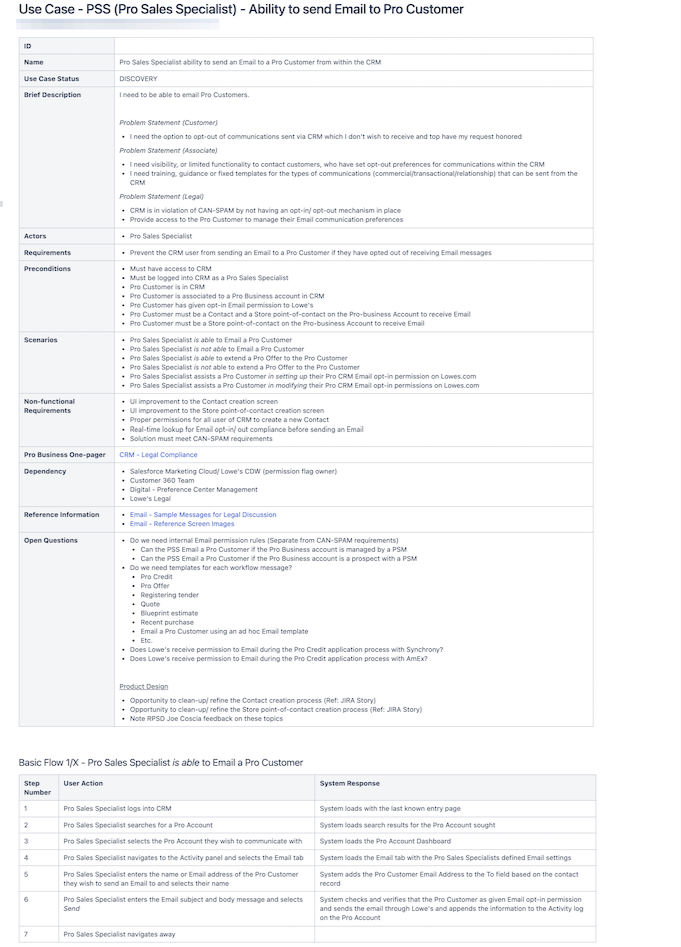
Basic flow
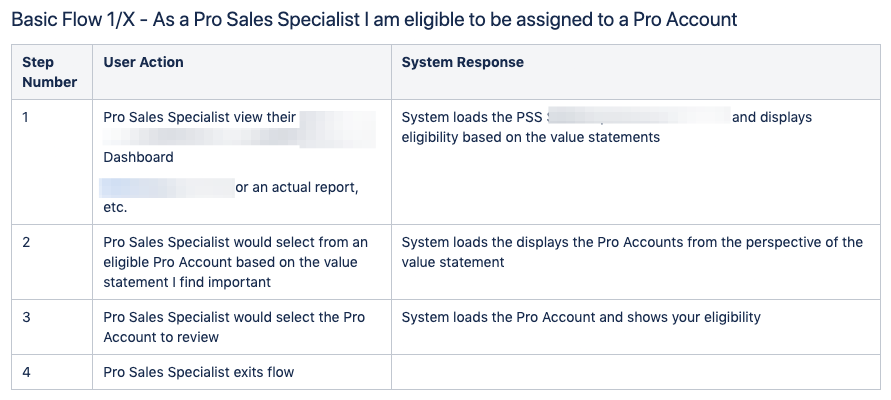
Visual design
The design team utilized the Salesforce Lightning design system to build the CRM platform. This design system is built for front-end UI developers to implement. This led to many constraints we had to overcome as a design team.
Insights:
- The Salesforce Lightning (SFL) design library does not allow UX wire-framing and sketching methods.
- The business requirements required custom prototype builds rather than utilizing out-of-the-box Salesforce design patterns, causing constant friction between product design, product management, and the development team.
- The learning curve of using SFL as a product designer is much steeper than using it as a developer.
- The SFL component library for Sketch is constantly being updated and requires custom code implementation.

Gathering user feedback
Our team spent time in the stores talking with the sales reps post-launch and captured their feedback.
Insights:
- The new CRM product drastically improved over Genesis and PBM, the current software being phased out.
- The sales associates were still looking for more capabilities to help them with their sales tasks.
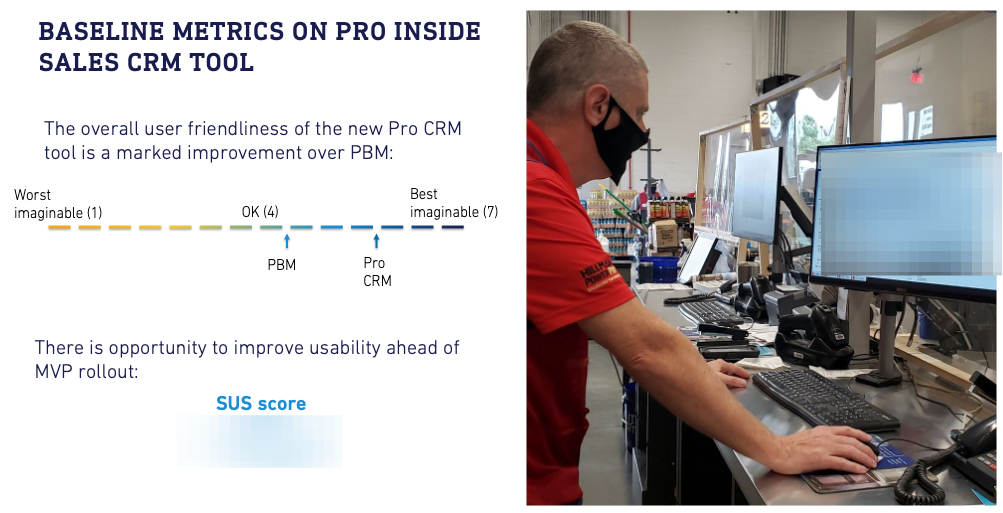
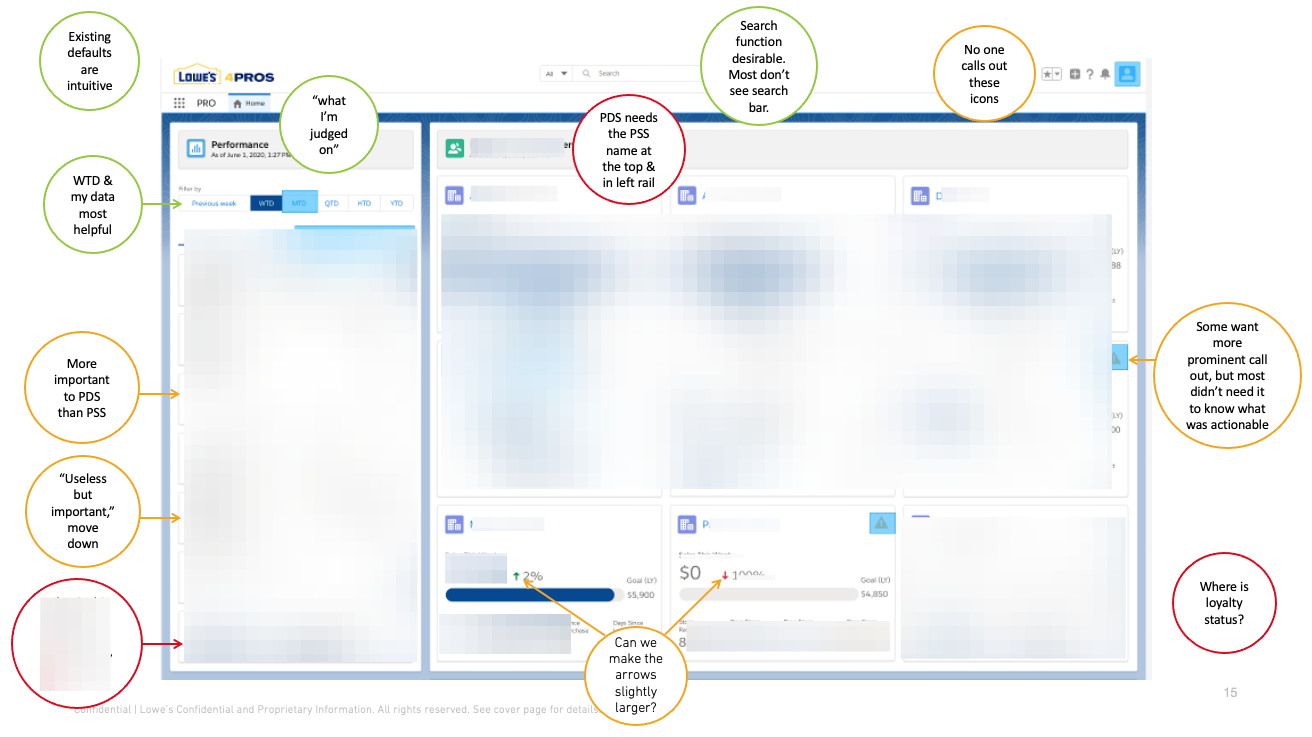
Reflections and details
- It was an incredibly difficult project to execute from a design perspective due to ambiguous requirements. There was no target state to guide us throughout the project.
- Most of the challenges centered around identifying and prioritizing the right value proposition to execute.
- I introduced user story mapping workshops to unblock the team when they became gridlocked and were unable to move forward due to vague requirements.
- I introduced the team to use cases and writing them together clarified unclear and vague functional requirements.
Type: web application, mobile app, Salesforce
Date: 2019 - 2020
Company: Lowe's
Role: Lead Product Designer
What I did: Conducted intakes, identified & prioritized new opportunities, co-led quarterly planning, led story mapping and use case ideation workshops, wrote and directed writing of use cases, user research, and journey maps.
Tools: Confluence, Miro, Salesforce Lightning, and Figma.
Workshops: User story mapping
Get in touch
Thank you for visiting my case study. Please contact me if you want to discuss any of my case studies and see an opportunity to work together.